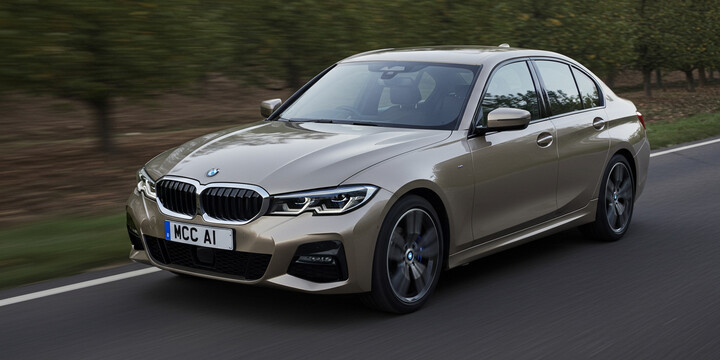
BMW 3 SERIES SALOON (2019-22) 318I 4DR SALOON 2.0 156 GPF SS EU6 SE PRO AUTO8
The BMW 3 SERIES SALOON (2019-22) 318I 4DR SALOON 2.0 156 GPF SS EU6 SE PRO AUTO8 stands out as a stylish and practical executive saloon that offers a blend of comfort, performance, and efficiency. Designed primarily for drivers seeking a versatile car for daily commuting, family outings, or business use, this model is well-suited for those who value a refined driving experience coupled with modern features. Its sleek design and reputation for quality make it a popular choice among UK drivers looking for a reliable and stylish vehicle in the compact executive segment.
What makes the BMW 3 SERIES SALOON (2019-22) 318I 4DR SALOON particularly appealing is its well-balanced mix of sporty driving dynamics and fuel efficiency, thanks to its efficient 2.0-litre engine. With an average recorded mileage of around 34,445 miles from recent data, this model has been used regularly without excessive wear—ideal for both daily commutes and longer journeys. Known for their reliability and premium interior, BMW 3 Series saloons are often compared favorably against rivals like Audi A4 and Mercedes-Benz C-Class, offering distinctive BMW driving enjoyment and build quality. The 318i variant, especially the SE PRO trim with automatic transmission, provides a comfortable, well-equipped ride that appeals to discerning drivers seeking a premium feel without a hefty price tag.

average use

The latest mileage data for the BMW 3 Series Saloon (2019-22) 318I indicates that the majority of these vehicles have recorded relatively low mileages, with 77.8% having driven between 0 and 10,000 miles. Additionally, 22.2% of the vehicles have recorded mileages between 30,000 and 40,000 miles. This suggests that most of these cars are relatively new or have seen light use, which can be an appealing factor for potential buyers seeking low-mileage vehicles.

vehicle values

The private sale valuation data for the BMW 3 Series Saloon (2019-22) 318I 4DR shows that most price ranges—specifically those between £18,000 and £31,000—each account for approximately 11.1% of the sample. Notably, the £29,000 to £30,000 range stands out, comprising a significantly higher 44.4% of the valuations, indicating that this price bracket is the most common for private sales of this model. This suggests a clustering of private sale prices around the mid to high £20,000s, with a concentration around the upper £29,000 mark.

production years

The data indicates that the majority of BMW 3 Series Saloon (2019-22) 318I vehicles are manufactured in 2021, accounting for approximately 77.8%, with a smaller proportion manufactured in 2022 at around 22.2%. This suggests that most of the vehicles currently available or on the market are from the 2021 model year, possibly reflecting the production cycle or supply trends for this model during this period.

colour popularity

The data indicates that for the BMW 3 Series Saloon (2019-22) 318I model, the most common main paint colours are Black and Blue, each accounting for approximately one-third (33.3%) of the vehicles. White is also quite popular, representing about 22.2%, while Grey is less common at around 11.1%. Notably, Black and Blue are equally prevalent, highlighting a preference among buyers or possibly a standard colour offering for this model during this period.

ownership cycle

Based on the provided data, it appears that all identified vehicles of the BMW 3 Series Saloon (2019-22) 318i model have only had a single registered keeper. This indicates a consistent record of ownership without any vehicles changing hands multiple times within the dataset, suggesting these vehicles may have relatively stable ownership histories.

engine choices

The data indicates that for the BMW 3 Series Saloon (2019-22) 318I 4DR Saloon 2.0 156 GPF SS EU6 SE PRO Auto8 model, all available vehicles are powered solely by petrol engines, with no alternative fuel types represented. Notably, the engine capacity information is missing, suggesting that it is either not recorded or not available for this specific model in the dataset. Overall, these vehicles appear to be uniformly petrol-powered with a 2.0L engine size, highlighting their consistency in fuel type.












